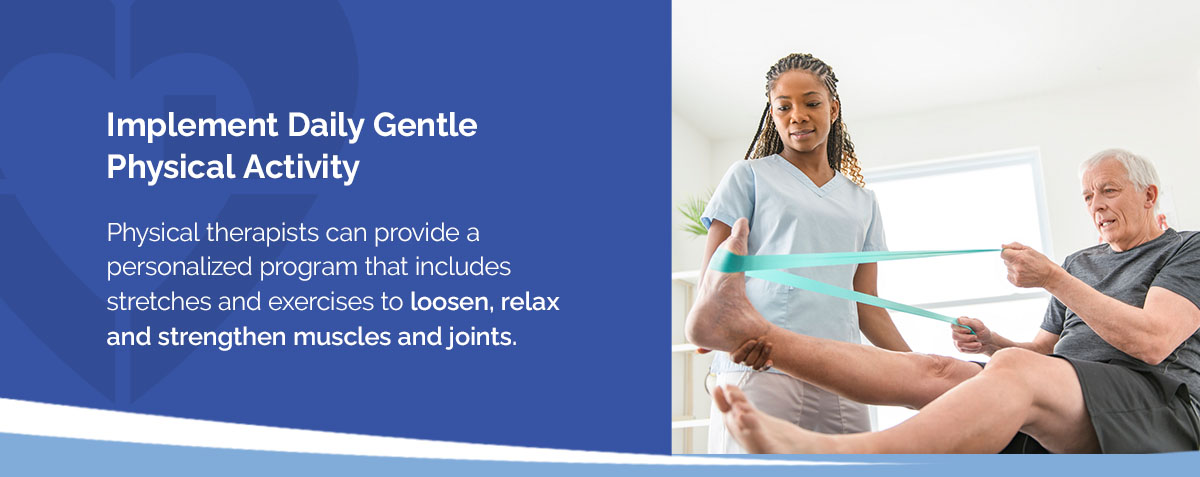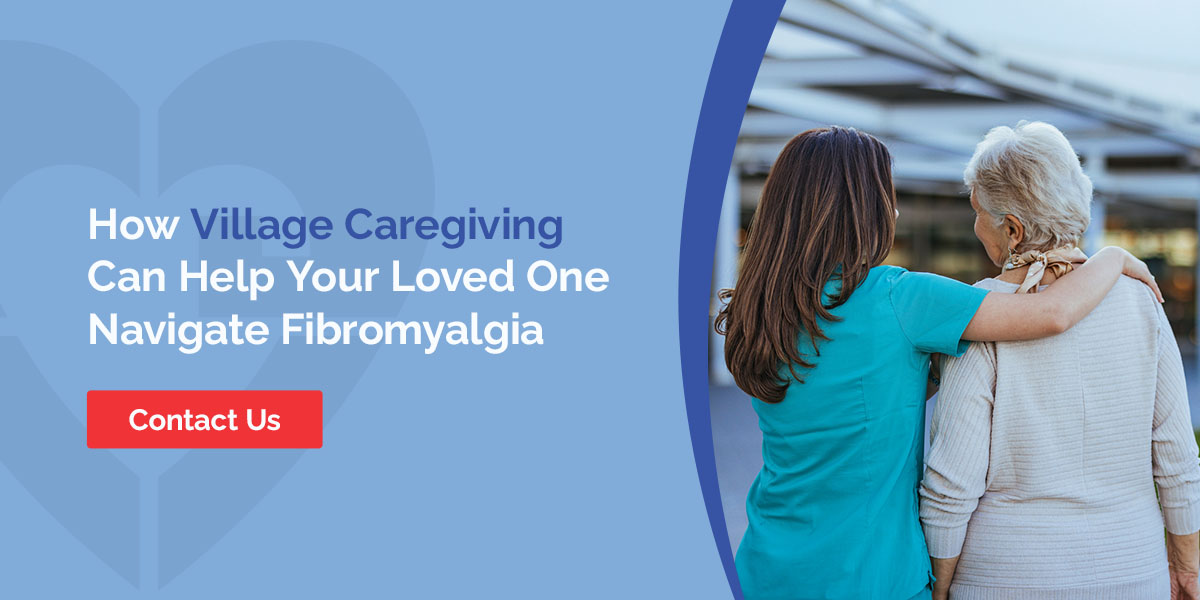Fibromyalgia is a long-term condition that causes widespread pain, fatigue and tenderness throughout the body. To manage it well, it’s important to consider what triggers the individual’s unique symptoms, then take steps to address the most pressing issues.
An Overview of Fibromyalgia
Most people with fibromyalgia are diagnosed after age 40, with women twice as likely to develop the condition as men. Age-related changes and comorbidities mean seniors face unique challenges, but symptoms can be managed with early recognition and a holistic, supportive approach to care.
This condition often starts with a feeling as if you are hurt all over or always have the flu. Other symptoms of fibromyalgia include:
- A deep, throbbing pain or aches in the muscles, joints and tissues.
- Pain in the face and jaw.
- Headaches and migraines.
- Persistent tiredness, fatigue and a lack of energy that doesn’t improve with rest.
- Brain fog (called “fibro fog”) and memory problems.
- Insomnia and sleeping disturbances.
- Bladder control and digestive issues.
- Anxiety and depression.
These symptoms can easily be mistaken for other age-related conditions, so it’s important to consult a health care professional. Diagnosis typically involves reviewing symptoms and family history, conducting a physical exam and sometimes ordering blood tests and imaging to rule out other causes.
Experts aren’t sure of the causes of the condition. It is thought that fibromyalgia can run in families. If one of your parents has it, you might be more likely to develop it too. People with fibromyalgia are often more sensitive to pain, and experts think this may be because of changes in the genes that affect how the brain sends and receives pain signals.
How Fibromyalgia Impacts Seniors’ Daily Living
This painful condition can affect seniors on multiple levels, impacting their independence and quality of life:
- Difficulty with mobility: Many seniors already face limited mobility or joint pain, and fibromyalgia flare-ups can worsen those symptoms. This can have a far-reaching effect and make it harder to participate in favorite activities or self-care. It’s also harder for seniors to incorporate physical activity to alleviate joint stiffness.
- Sensitivity to pain: Increased sensitivity to touch, light, temperature and noise can quickly dampen the small joys of daily life. Pain also disrupts sleep, which can worsen fatigue.
- Cognitive challenges: Seniors who have existing cognitive difficulties with memory or concentration may be worse during flare-ups because of fibro fog — they may also be more likely to forget medications that may help with fibromyalgia symptoms. Brain fog and memory issues can also lead to confusion, which takes an emotional toll on the individual and their loved ones.
Carefully addressing fibromyalgia in aging adults can lessen their fear and discomfort and reduce the risk of depression, anxiety and social isolation.
Effective Pain Management Strategies for Seniors
With thoughtful care and the right support, seniors with fibromyalgia can live a more pain-free, comfortable life.
1. Working With In-House Caregiving Services
Fibromyalgia is a multifaceted condition that can impact many facets of daily life. Letting a professional, compassionate family caregiver help can ease daily living for both the senior and their family. Home care can help in the following ways:
- Respite care: Family caregivers can take care of your loved one’s needs while you run errands or practice self-care.
- Help with errands: A family caregiver can assist with grocery shopping and transportation to medical appointments so seniors can continue participating in daily life.
- Hygiene help: Fibromyalgia pain and stiffness can make bathing and grooming difficult. A gentle family caregiver can help with these activities so seniors can maintain their sense of dignity and independence.
- Nutritional assistance: A carefully matched family caregiver can prepare nutritional meals and provide company at meal times.
- Laundry and light housekeeping: It’s much easier for fibromyalgia sufferers to maintain a clean and healthy environment when a family caregiver can help with laundry and light housekeeping.
2. Track and Avoid Potential Triggers
Since each person’s health and circumstances are unique, tracking individual triggers is crucial for planning your fibromyalgia avoidance strategies. One way to do this is by keeping a detailed diary that tracks symptoms, pain levels scored from 1 to 10, sleep quality, and external factors like weather, temperature, diet, exercise and mood.
After a while, review the diary and note any patterns. You may find that certain foods, activities or situations lead to flare-ups. Then, take steps to reduce exposure to those triggers to decrease the chance of worsening symptoms.
3. Make In-Home Modifications
Living with the chronic pain of fibromyalgia combined with age-related challenges can make even simple tasks hard to do. Certain home adjustments can make a big difference. Examples include modifying or adding:
- Wider doorways and hallways to accommodate mobility aids.
- Ramps at entrances.
- Grab bars in the bathroom and wherever support is needed.
- An elevated toilet, walk-in shower or bath riser.
- Adequate motion-sensor lights and an intercom system.
- Lever handles to replace doorknobs.
- Nonslip flooring to reduce fall risks.
- Wider spaces between furniture.
- Carpet to replace loose rugs.
- Pull out shelves and drawers.
- Lower counters in the kitchen and bathrooms.
- Easy-open gadgets for cans and jars.
4. Implement Daily Gentle Physical Activity
Physical therapists can provide a personalized program that includes stretches and exercises to loosen, relax and strengthen muscles and joints. Examples include yoga, gentle walks and swimming.

Make daily movement sociable and fun. Pay close attention to how the body responds, and note the effects of the exercise program on fibromyalgia symptoms to adjust where necessary.
5. Seek Support and Community
Reaching out to organizations and support groups can ease the journey. The National Fibromyalgia Association (NFA) and Support Fibromyalgia Network (SFN) are patient-centered organizations that empower through education and support.
How Village Caregiving Can Help Your Loved One Navigate Fibromyalgia
Fibromyalgia can make daily life feel overwhelming for seniors and their families. Having a compassionate, knowledgeable support system can make all the difference. As Sophia Loren once said, “There is a fountain of youth: it is your mind, your talents, the creativity you bring to your life and the lives of people you love. When you learn to tap this source, you will truly have defeated age.”
Village Caregiving has family caregivers in 65 locations across the United States, and we are here to help your loved one manage symptoms, maintain independence and enjoy a better quality of life at home. With flexible, personalized care plans and a commitment to going above and beyond, we’re ready to support your family each step of the way.
Contact Village Caregiving today to discuss how we can help your loved one.



Recent Comments